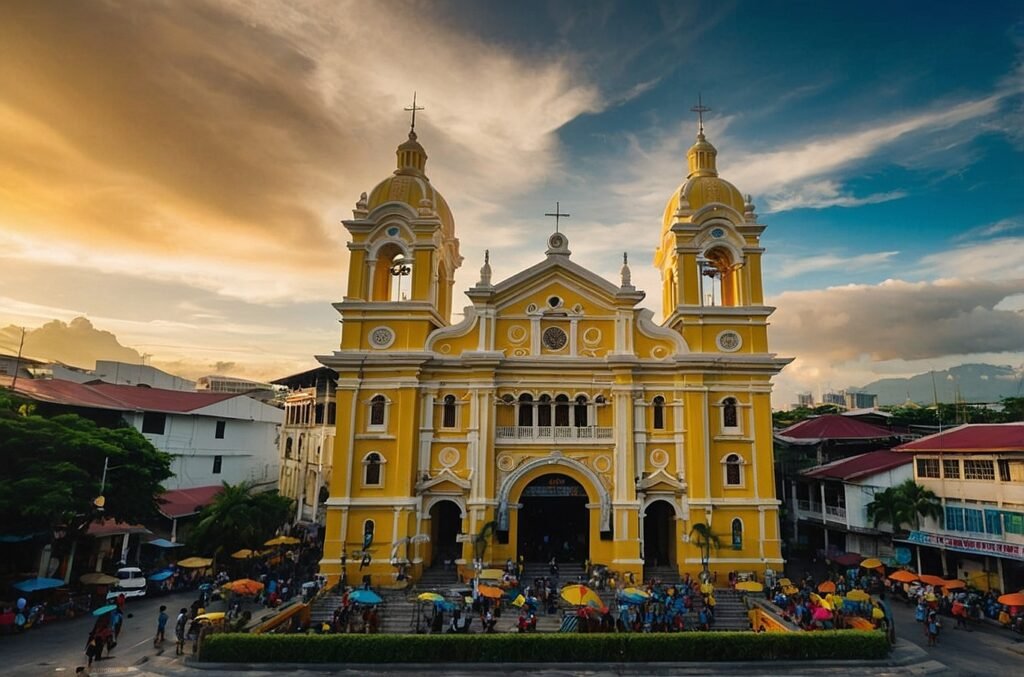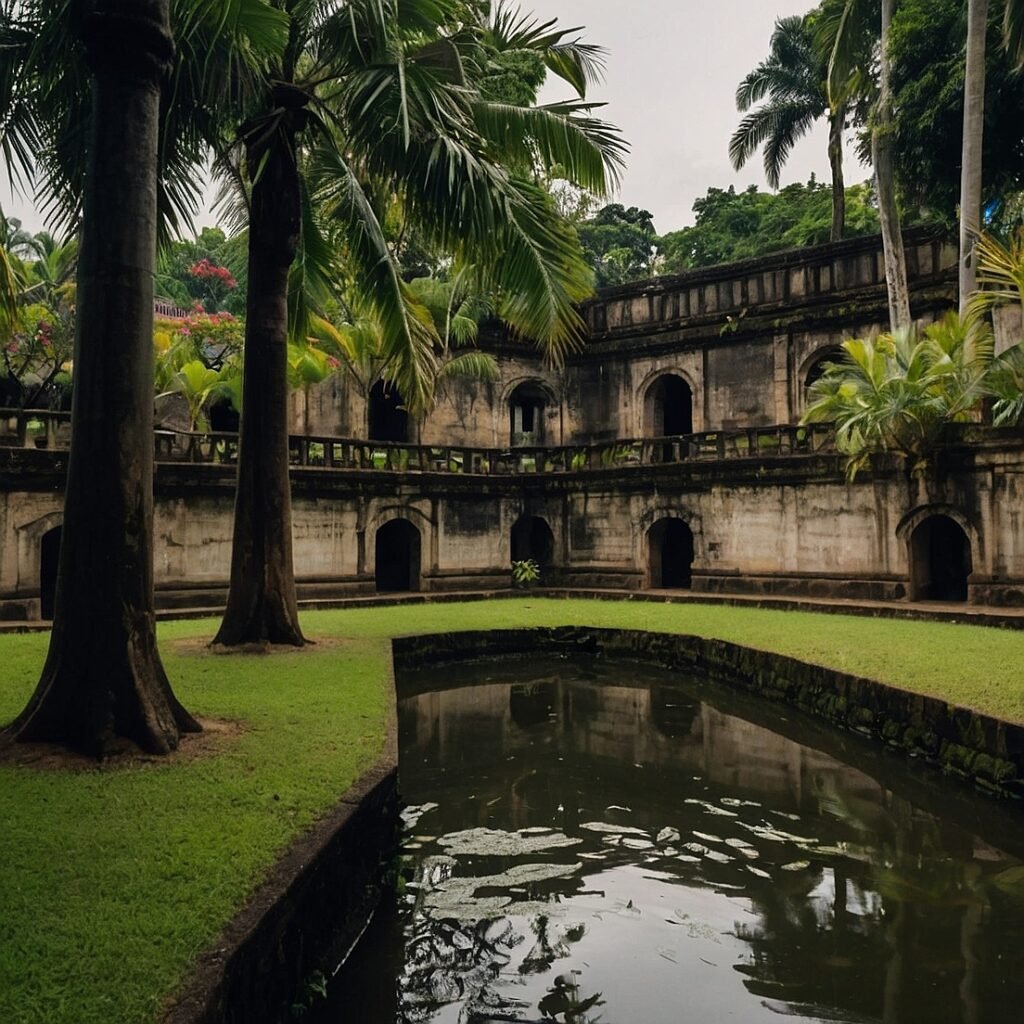Cebu City, often referred to as the “Queen City of the South,” is a vibrant metropolis located in the central Philippines. As the oldest city in the country, Cebu boasts a rich history that spans over 400 years, blending Spanish colonial influence with indigenous Filipino culture. This blog post will explore the historical significance of Cebu City, its journey to becoming a major economic hub in the Visayas region, and the numerous landmarks that stand as testaments to its colorful past. We will delve into the city’s cultural heritage, architectural marvels, and the stories behind its most iconic sites. Through this exploration, readers will gain a deeper appreciation for Cebu City’s role in shaping Philippine history and its continued importance in the nation’s cultural and economic landscape.
The Historical Foundations of Cebu City
Pre-Colonial Era
Long before the arrival of Spanish colonizers, Cebu was already a thriving settlement known as Sugbu. The island was a center of trade, with merchants from various parts of Asia conducting business with the local population. Archaeological evidence suggests that Cebu had established trading relationships with China as early as the 10th century. The pre-colonial Cebuanos had a sophisticated society with a system of government led by local chieftains called Datus. This period laid the groundwork for Cebu’s future as a commercial and cultural crossroads in the Philippines.
Spanish Colonial Period
The arrival of Ferdinand Magellan in 1521 marked the beginning of Spanish influence in Cebu. Although Magellan met his demise on the nearby island of Mactan, his expedition paved the way for future Spanish colonization. In 1565, Miguel López de Legazpi established the first Spanish settlement in the Philippines in Cebu, marking the official start of the Spanish colonial era. This period saw the introduction of Christianity, which would profoundly shape Cebuano culture and society. The Spanish colonial government implemented significant changes in Cebu’s administrative, religious, and social structures, many of which are still evident in the city’s architecture and cultural practices today.
American and Japanese Occupations
Following the Spanish-American War, Cebu, along with the rest of the Philippines, came under American rule in 1898. This period brought about modernization in various aspects of Cebuano life, including education, infrastructure, and governance. The American era also saw the expansion of Cebu’s port facilities, further cementing its status as a major trading hub. During World War II, Cebu fell under Japanese occupation from 1942 to 1945. The city suffered significant damage during this period but played a crucial role in the resistance movement against Japanese forces.
Post-War Development and Modern Era
After World War II, Cebu City experienced rapid growth and development. The city’s strategic location and natural harbor continued to attract investments, leading to its emergence as the second most important metropolitan center in the Philippines after Manila. In recent decades, Cebu City has transformed into a major economic powerhouse, with thriving industries in manufacturing, services, and tourism. Despite its modernization, the city has managed to preserve much of its historical heritage, creating a unique blend of old-world charm and contemporary urban living.
Cebu City’s Economic Growth and Significance
Cebu City’s journey from a small trading port to a major economic center is a testament to its strategic location and the resilience of its people. Today, the city is recognized as the main center of commerce, trade, and industry in the Visayas region.
Key Economic Indicators
To illustrate Cebu City’s economic prominence, let’s look at some key indicators:
| Indicator | Value | Year |
|---|---|---|
| GDP (Cebu Province) | PHP 588.4 billion | 2021 |
| GDP Growth Rate | 5.2% | 2021 |
| Population | 964,169 | 2020 Census |
| Employment Rate | 92.7% | 2021 |
| Number of Registered Businesses | 38,648 | 2021 |
These figures demonstrate Cebu City’s robust economic performance and its significant contribution to the Philippine economy.
Major Industries
Cebu City’s economy is diverse, with several key industries driving its growth:
- Information Technology and Business Process Outsourcing (IT-BPO)
- Tourism and Hospitality
- Manufacturing (furniture, electronics, shipbuilding)
- Real Estate and Construction
- Retail and Commerce
The IT-BPO sector, in particular, has seen remarkable growth in recent years, with Cebu City emerging as one of the top destinations for outsourcing companies in the Philippines.
Cebu City’s Historical Landmarks
Cebu City is home to numerous historical landmarks that offer glimpses into its rich past. These sites not only serve as tourist attractions but also play a crucial role in preserving the city’s cultural heritage.
Magellan’s Cross
One of the most iconic landmarks in Cebu City is Magellan’s Cross. Located in the heart of the city, this site marks the spot where Portuguese explorer Ferdinand Magellan planted a wooden cross upon arriving in the Philippines in 1521. The cross is housed in an octagonal pavilion near the Basilica Minore del Santo Niño. While the original cross is said to be encased within the present wooden cross for preservation, the site remains a powerful symbol of the beginning of Christianity in the Philippines and the country’s colonial history.
Basilica Minore del Santo Niño
Adjacent to Magellan’s Cross stands the Basilica Minore del Santo Niño, the oldest Roman Catholic church in the Philippines. Founded in 1565, the basilica houses the statue of the Santo Niño (Holy Child Jesus), which is believed to be the same image given by Magellan to Queen Juana of Cebu during the first baptism of Filipino converts. The church’s architecture is a blend of Muslim, Romanesque, and neoclassical influences, reflecting the various cultural impacts on Cebu throughout its history. The Basilica is not only a significant religious site but also a testament to the enduring faith of the Cebuano people.
Fort San Pedro
Fort San Pedro, the oldest and smallest triangular bastion fort in the Philippines, stands as a silent witness to Cebu’s colonial past. Built in 1565 by Spanish conquistador Miguel López de Legazpi, the fort served as the nucleus of the first Spanish settlement in the Philippines. Over the centuries, it has functioned as a stronghold against Muslim raiders, a barracks for American troops, and a prison camp during the Japanese occupation. Today, Fort San Pedro is a historical park and museum, offering visitors a glimpse into Cebu’s military history and colonial architecture.
Colon Street
Recognized as the oldest street in the Philippines, Colon Street was laid out by the Spanish in 1565 as part of their city plan for Cebu. Named after Christopher Columbus (Cristóbal Colón in Spanish), this historic thoroughfare was once the heart of Cebu’s commercial district. While much of its original architecture has been replaced by modern structures, Colon Street remains a bustling area that echoes its past as a center of trade and commerce. Walking along Colon Street offers visitors a unique blend of historical significance and contemporary urban life.
Casa Gorordo Museum
The Casa Gorordo Museum provides a window into the lifestyle of Cebu’s elite during the late 19th and early 20th centuries. Originally built in the 1850s, this well-preserved Spanish colonial house was home to four generations of the Gorordo family, including the first Filipino bishop of Cebu. The museum showcases period furniture, religious artifacts, and household items that offer insights into the daily life of affluent Cebuanos during the colonial era. The architecture of Casa Gorordo, with its mix of native and Spanish elements, is itself a valuable example of the cultural fusion that characterizes much of Cebu’s heritage.
Yap-Sandiego Ancestral House
Another well-preserved example of Cebu’s colonial architecture is the Yap-Sandiego Ancestral House. Built in the late 17th century, it is one of the oldest residential structures in the Philippines. The house is a testament to the craftsmanship of the era, constructed with coral stones and wood, and featuring intricate carvings and period furnishings. Visitors to the Yap-Sandiego house can experience the ambiance of a wealthy Chinese-Filipino merchant’s home during the Spanish colonial period, gaining insights into the multicultural influences that shaped Cebuano society.
Heritage of Cebu Monument
While not an ancient landmark itself, the Heritage of Cebu Monument is a significant artistic representation of Cebu’s history. Created by local artist Eduardo Castrillo and unveiled in 2000, this monumental sculpture depicts key events and figures in Cebu’s history. From the battle of Mactan to the beatification of Pedro Calungsod, the monument serves as a visual narrative of Cebu’s journey through time. Located in the original Plaza Parian, the site of the monument was once the residence of Cebu’s most prominent citizens during the Spanish colonial era.
Cultural Significance of Cebu City’s Landmarks
The historical landmarks of Cebu City are not merely static relics of the past; they continue to play vital roles in the cultural and spiritual life of Cebuanos and visitors alike.
Religious and Spiritual Importance
Many of Cebu’s landmarks, particularly the Basilica Minore del Santo Niño and Magellan’s Cross, hold deep religious significance. The annual Sinulog Festival, centered around the veneration of the Santo Niño, draws millions of devotees and tourists to Cebu City. This vibrant celebration combines religious devotion with cultural performances, showcasing the enduring impact of Cebu’s historical sites on contemporary spiritual practices.
Educational Value
These landmarks serve as invaluable educational resources, offering tangible connections to the events and people that shaped Philippine history. Schools regularly organize field trips to these sites, allowing students to engage with history beyond textbooks. Museums like those at Fort San Pedro and Casa Gorordo provide in-depth information and artifacts that enrich visitors’ understanding of Cebu’s past.
Tourism and Economic Impact
Cebu City’s historical landmarks are major tourist attractions, contributing significantly to the local economy. The tourism industry generates employment opportunities and supports various related sectors such as hospitality, transportation, and retail. The preservation and promotion of these sites have become integral to Cebu’s tourism strategy, highlighting the economic value of cultural heritage.
Community Identity and Pride
For Cebuanos, these landmarks are sources of community pride and identity. They represent the resilience and rich cultural heritage of the city, fostering a sense of continuity between past and present generations. Local festivals, events, and civic activities often incorporate these historical sites, reinforcing their relevance in contemporary Cebuano society.
Preservation Efforts and Challenges
The preservation of Cebu City’s historical landmarks is an ongoing effort that faces various challenges and opportunities.
Government Initiatives
Local and national government agencies have implemented policies and programs aimed at protecting and maintaining Cebu’s historical sites. These include:
- The National Historical Commission of the Philippines (NHCP) designation of several landmarks as National Historical Sites
- Local ordinances regulating development in heritage zones
- Restoration projects funded by both public and private sectors
Community Involvement
Grassroots organizations and civic groups play crucial roles in heritage preservation:
- Conducting awareness campaigns about the importance of historical landmarks
- Organizing volunteer-led tours and educational programs
- Participating in cleanup and maintenance activities
Challenges in Urban Development
As Cebu City continues to grow and modernize, balancing development with heritage preservation presents ongoing challenges:
- Pressure from real estate development in historical areas
- Environmental factors such as air pollution and climate change affecting ancient structures
- Limited funding for extensive restoration and maintenance projects
Innovative Approaches to Preservation
To address these challenges, stakeholders are exploring innovative solutions:
- Use of digital technology for virtual tours and 3D mapping of historical sites
- Public-private partnerships for funding and management of heritage sites
- Integration of historical landmarks into urban planning and development strategies
Future Outlook for Cebu City’s Historical Landmarks
As Cebu City moves forward in the 21st century, the future of its historical landmarks looks promising yet challenging. There is a growing recognition of the importance of these sites not only for their historical value but also for their potential in sustainable urban development and tourism.
Sustainable Tourism
Efforts are underway to develop sustainable tourism models that balance visitor access with preservation needs. This includes:
- Implementing carrying capacity studies for popular sites
- Developing eco-friendly transportation options to historical areas
- Creating immersive, technology-enhanced experiences that reduce physical impact on the sites
Integration with Smart City Initiatives
As Cebu City pursues smart city status, there are opportunities to integrate historical landmarks into modern urban systems:
- Installing IoT sensors for real-time monitoring of structural integrity and environmental conditions
- Developing mobile apps for self-guided tours and augmented reality experiences
- Implementing smart lighting systems to enhance nighttime visibility while reducing energy consumption
Educational and Cultural Programs
Expanding educational and cultural programs centered around these landmarks can ensure their relevance for future generations:
- Collaborations with schools and universities for research and conservation projects
- Artist residency programs inspired by historical sites
- Regular cultural events and performances that bring these spaces to life
Conclusion
Cebu City’s historical landmarks are invaluable assets that bridge the past and present, offering insights into the rich tapestry of Filipino history and culture. From the iconic Magellan’s Cross to the bustling Colon Street, these sites tell the story of Cebu’s transformation from a small trading port to the Queen City of the South. As Cebu City continues to grow and evolve, the preservation and promotion of these landmarks remain crucial not only for maintaining the city’s unique character but also for driving economic growth through tourism and cultural industries.
The challenges of urban development and modernization present both risks and opportunities for Cebu’s historical sites. However, with continued collaboration between government agencies, private sector entities, and community organizations, there is strong potential for these landmarks to remain vibrant, relevant, and well-preserved for future generations.
As we look to the future, Cebu City’s historical landmarks stand as enduring symbols of the city’s resilience, cultural diversity, and spiritual depth. They serve as anchors of identity in a rapidly changing urban landscape, reminding both residents and visitors of the rich heritage that has shaped this dynamic city. By valuing and protecting these sites, Cebu City ensures that its status as the Queen City of the South is rooted not just in economic prosperity but also in a profound respect for its historical and cultural foundations.
Disclaimer: While every effort has been made to ensure the accuracy of the information presented in this blog post, historical facts and data may be subject to different interpretations and ongoing research. Readers are encouraged to cross-reference information with additional sources and to report any inaccuracies so we can correct them promptly. The content provided here is for informational purposes only and should not be considered as definitive historical or statistical data.




